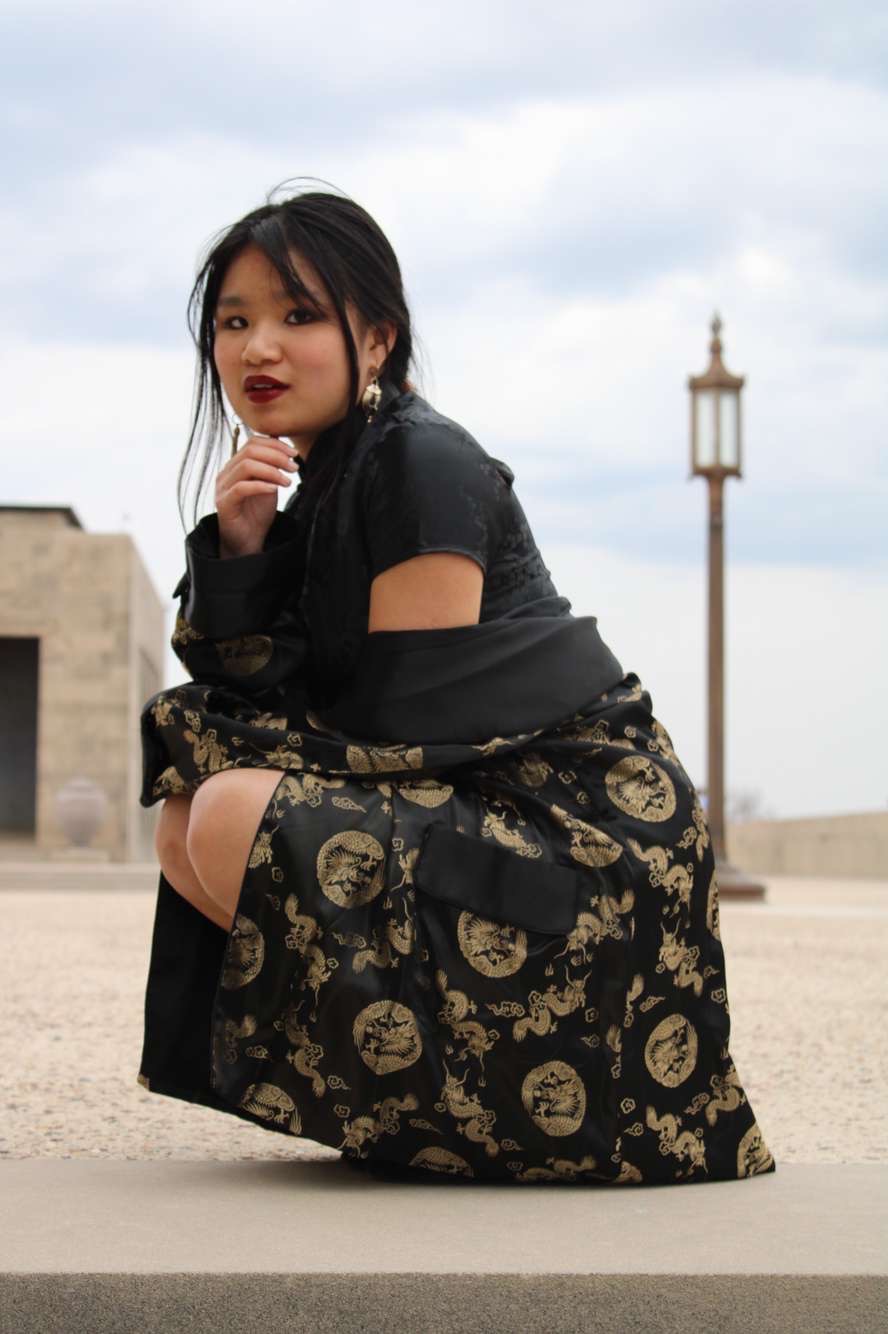Chinese New Year Photoshoot
- Evan Neubauer

- Feb 17, 2024
- 3 min read
Happy New Year! Last week we talked about Valentine’s Day, so this week I’m bringing you a little bit of Chinese culture. From February 10th to the 24th, I’ll be celebrating Chinese New Year, a traditional festival also known as Lunar New Year in other Asian countries. In celebration, this Chinese New Year shoot is meant to celebrate and explore what it means to be Chinese in a modern American world.
If you’ve been keeping up with my Instagram, you’ll know that I actually worked on the first day of Chinese New Year for the sisters of Sigma Alpha Iota, Kappa Sigma chapter. I had the privilege of shooting their annual Fireside Variety Show at Saint Mary’s University of Minnesota. Although the new year isn’t a national holiday in America, the community at Saint Mary’s was a wonderful place to celebrate.
Traditionally, we give each other oranges for new year because the word for orange in sounds similar to the word for gold in Mandarin. By giving an orange, we wish you a golden year- a tradition that was so lovely to extend to my friends and performers at Fireside.

The major themes of Chinese New Year are that of renewal and family. This year is one of the first that I have not been home with my family to celebrate. Instead, I’ve planned traditional celebrations with my friends and got to do this photoshoot with my lovely friend and model, Nozomi Osada.

Nozomi is Japanese, and also celebrates the Lunar New Year. One day I’d love to photograph her traditional clothes in Japan, but until then she wore one of my traditional Chinese dresses for this photoshoot called the cheongsam or qipao.
The cheongsam originated from the clothing of the Manchurian people who dominated the Qing Dynasty from the 1600’s to early 20th century. Men wore the changpao robes, and women the qipao gowns. Although feminine, the qipao was originally a long, loose garment meant for modesty and utility. It wasn’t until the May Fourth Movement of 1919 that the qipao began to evolve.
The modern, tight-fitting qipao emerged from Shanghai during the 1920’s as western and eastern cultures began to meet as Chinese women experienced their own revolution. Cheongsams were a reflection of changing gender expectations and greater freedoms for women, featuring short sleeves, high slits, and opulent design. Today, the cheongsam has spread to other Asian nations, and continues to modernize. The cheongsam is equally a traditional garment- inspired by the Qing and today often featuring pankou, the knotted buttons of the 18th century- and a modern one reflective of new-age Chinese values.

For these photos, I dressed Nozomi in a black cheongsam that mirrors the American miniskirt. We chose to lean into the glamor of the outfit, shooting in a literal ballroom with these gorgeous green walls.

For this set of self-portraits, I opted for a cleaner, monochrome background to match the elegance of this blue dress. As a pair, these two shoots reflect the history of the cheongsam and the duality of being a Chinese-American: Equal parts sleek traditionalism and maximalist modernity, equally intertwined with one another. The history of Chinese New Year and the cheongsam are so rich, and I encourage you to explore it more, if only for the pretty pictures. Projects like this are the reason I love photography so much. Gong xi fa cai; may you prosper this year!

































Comments